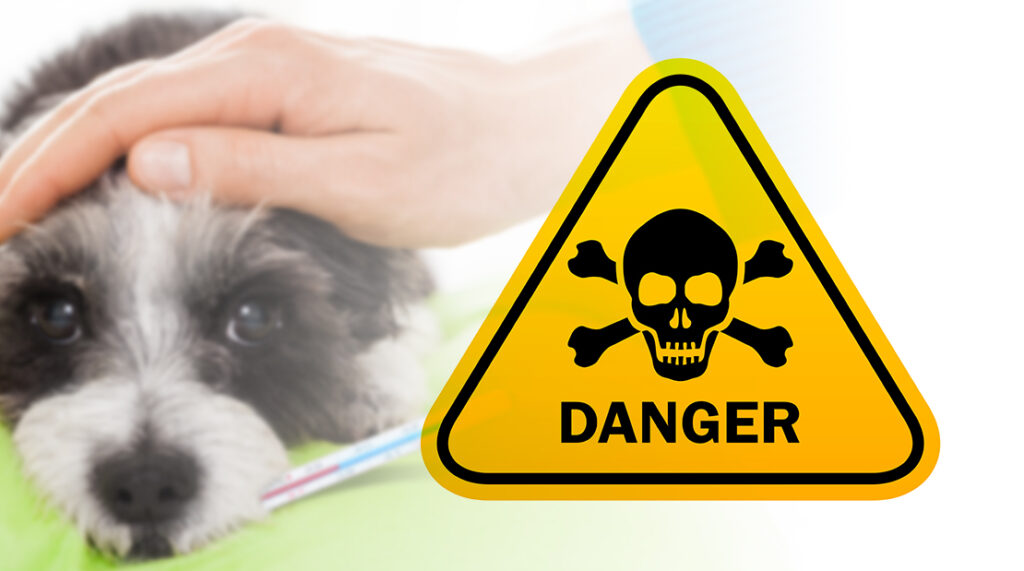As pet owners, we strive to provide a safe and healthy environment for our furry companions. However, there are many common household items that can be toxic to pets, posing a serious threat to their well-being.
In this blog post, we will explore some surprising substances that you may not have known were poisonous to your beloved pets.
Xylitol: The Hidden Sweetener
Xylitol, a sugar substitute commonly found in sugar-free gum, candies, baked goods, and some peanut butters, can be highly toxic to pets, particularly dogs.
Ingesting xylitol can lead to a sudden release of insulin, causing a dangerous drop in blood sugar levels. Symptoms include vomiting, loss of coordination, seizures, and, in severe cases, liver failure.
Medications: A Risk in Disguise
Many medications that are safe for humans can be extremely harmful to pets. Over-the-counter pain relievers like acetaminophen (Tylenol) and ibuprofen (Advil) can cause gastrointestinal ulcers, liver damage, and even kidney failure in pets.
Always keep medications securely stored and never give your pet any medication without veterinary guidance.
Common Household Plants: Beauty with a Toxic Side
Beauty with a Toxic Side While plants can add beauty to our homes, certain varieties can be toxic to our pets if ingested.
Lilies, azaleas, tulips, daffodils, and sago palms are just a few examples of plants that can cause gastrointestinal upset, organ damage, or even be fatal to our furry friends. Make sure to research and ensure that the plants in your home or garden are safe for your pets.
Everyday Cleaning Products: Cleanliness and Caution
Household cleaners, such as bleach, disinfectants, and toilet bowl cleaners, may be essential for maintaining a clean home, but they can be hazardous to your pet’s health.
Ingesting or inhaling these chemicals can cause gastrointestinal distress, respiratory problems, or chemical burns. Ensure that cleaning products are stored securely and keep your pets away from freshly cleaned areas until they are fully dry.
Chocolate: A Sweet Temptation
Most pet owners are aware that chocolate is harmful to pets, but the severity of the toxicity may be underestimated. Chocolate contains theobromine and caffeine, which dogs and cats cannot metabolize as efficiently as humans.
Ingesting chocolate can lead to symptoms ranging from mild agitation and increased heart rate to seizures, cardiac issues, and even death. Remember, the darker the chocolate, the higher the concentration of these toxic substances.
Rodenticides: A Hazardous Solution
If you’re dealing with a rodent problem, it’s important to exercise caution when using rodenticides. These products are designed to attract and eliminate rodents, but they can also attract curious pets.
Ingesting rodenticides can cause internal bleeding, organ failure, and even death. Ensure that these products are placed in areas inaccessible to your pets and consider pet-friendly alternatives.
Grapes, Raisins, Sultanas, & Currants: A Hidden Danger
Many pet owners are unaware that grapes, raisins, sultanas, and currants can have devastating effects on their dogs’ health. These fruits contain an unknown toxin that affects dogs differently than other animals.
Even a small amount can cause severe kidney damage, leading to symptoms such as vomiting, diarrhea, abdominal pain, decreased appetite, and increased thirst. In some cases, ingestion can lead to kidney failure and be life-threatening
Things to Tell Your Vet
In case of an emergency, you can assist your veterinary practice in making informed decisions regarding the treatment of your dog and determining the best course of action. To ensure effective communication, it’s crucial to provide your veterinary practice with the following information:
- Identify the Poison: Inform your veterinarian about the specific poison you suspect your dog has been exposed to, such as chocolate, ibuprofen, or any other relevant substances. If possible, provide product names or a list of ingredients to assist with accurate diagnosis.
- Quantity of Exposure: Share the estimated amount of the poison your dog may have ingested, in measurements like milligrams (mg), milliliters (ml), number of tablets, or approximate quantities. Even rough estimations can be helpful in assessing the severity of the situation.
- Timing of Exposure: Communicate when your dog was exposed to the poison, specifying whether it happened recently (e.g., five minutes ago), within a few hours, or even several days in the past. This information aids the veterinarian in determining the urgency of treatment.
- Observe Clinical Effects: Report any signs of illness or unusual behavior your dog has displayed since the exposure. Describe the clinical effects you have observed, such as vomiting, diarrhea, changes in appetite, lethargy, or any other relevant symptoms. This information assists the veterinarian in evaluating the severity of the poisoning.
Remember, it is always better to seek veterinary advice promptly rather than waiting for your dog to show signs of illness. If you are uncertain or concerned about your dog’s well-being, do not hesitate to contact your veterinary practice for professional guidance and assistance.
Conclusion
Being aware of the potential hazards around your home is crucial to safeguarding your pet’s health and well-being. While this blog post has highlighted several commonly overlooked toxic substances, it is by no means an exhaustive list.
As a responsible pet owner, it’s essential to educate yourself, thoroughly research potential hazards, and consult with a veterinarian or a pet poison control hotline for the most up-to-date information. By taking proactive measures, you can create a safe environment that allows your beloved pets to thrive.
Also check out our blog on the dos and don’ts of feeding your pet.

